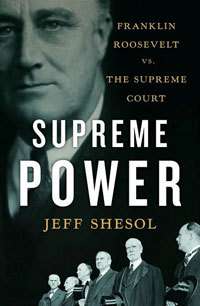The Supremes

Even avid students of American governance and civic-minded people may fall a little short in their understanding of the least accessible branch of the United States national government—I am referring to the Supreme Court, occasionally referred to by various commentators as the Supremes.
That understanding is not advanced by the hysterical keening and ululating from reactionary zealots regarding “strict constructionism” and “the Founding Fathers this and Founding Fathers that,” and other mumbo-jumbo when justice-appointment time rolls around—as it soon will with Justice Stevens publicizing his intention to retire.
Of course, we have already had a taste of the Fun House with the Sotomayor appointment and its attendant goonish histrionics from the usual quarters. And the recent jousting between the current president and the court regarding its shameful decision to complete the conversion of our political system into a jukebox.
Thus useful books on the Supreme Court no doubt have a limited audience—more often biographies of the justices as we have seen a spate of recently. Jeff Shesol (Mutual Contempt: Lyndon Johnson, Robert Kennedy and the Feud That Defined a Decade), who among other things is a historian, has brought forth Supreme Power: F.D.R.’s Battle with the Supreme Court (W.W. Norton), a splendid piece of history on Franklin Roosevelt’s attempt to “pack” the Supreme Court, which had been thwarting his legislation, by adding six justices.
The ensuing conflict (circa February 1937), which is counted as a major defeat for F.D.R. and arguably the foreshadowing of the G.O.P. dominance of the post-war years, is a compelling story which Sheshol has rendered intelligently—making the fault lines of constitutional partisanship intelligible, if not obvious.
